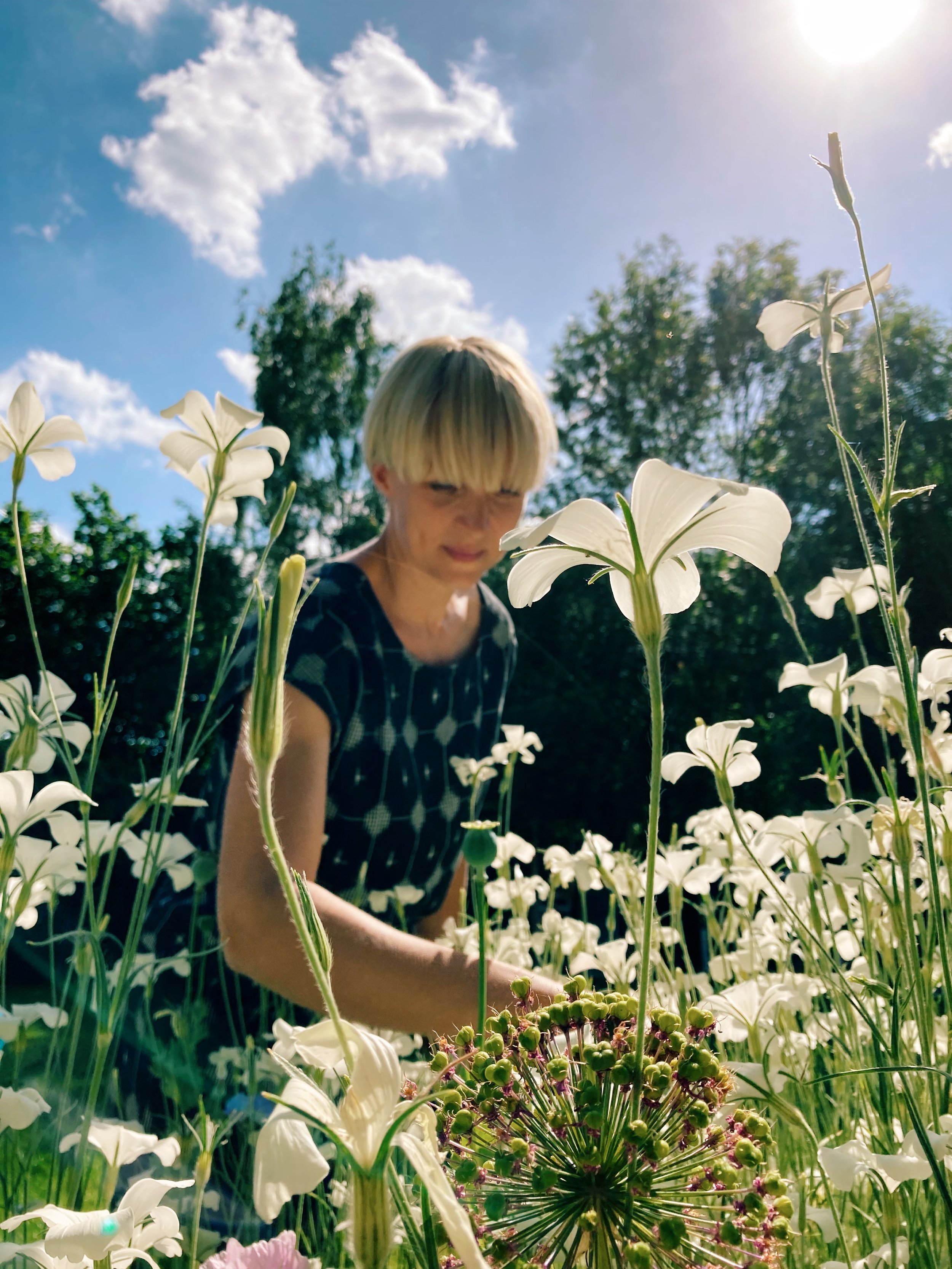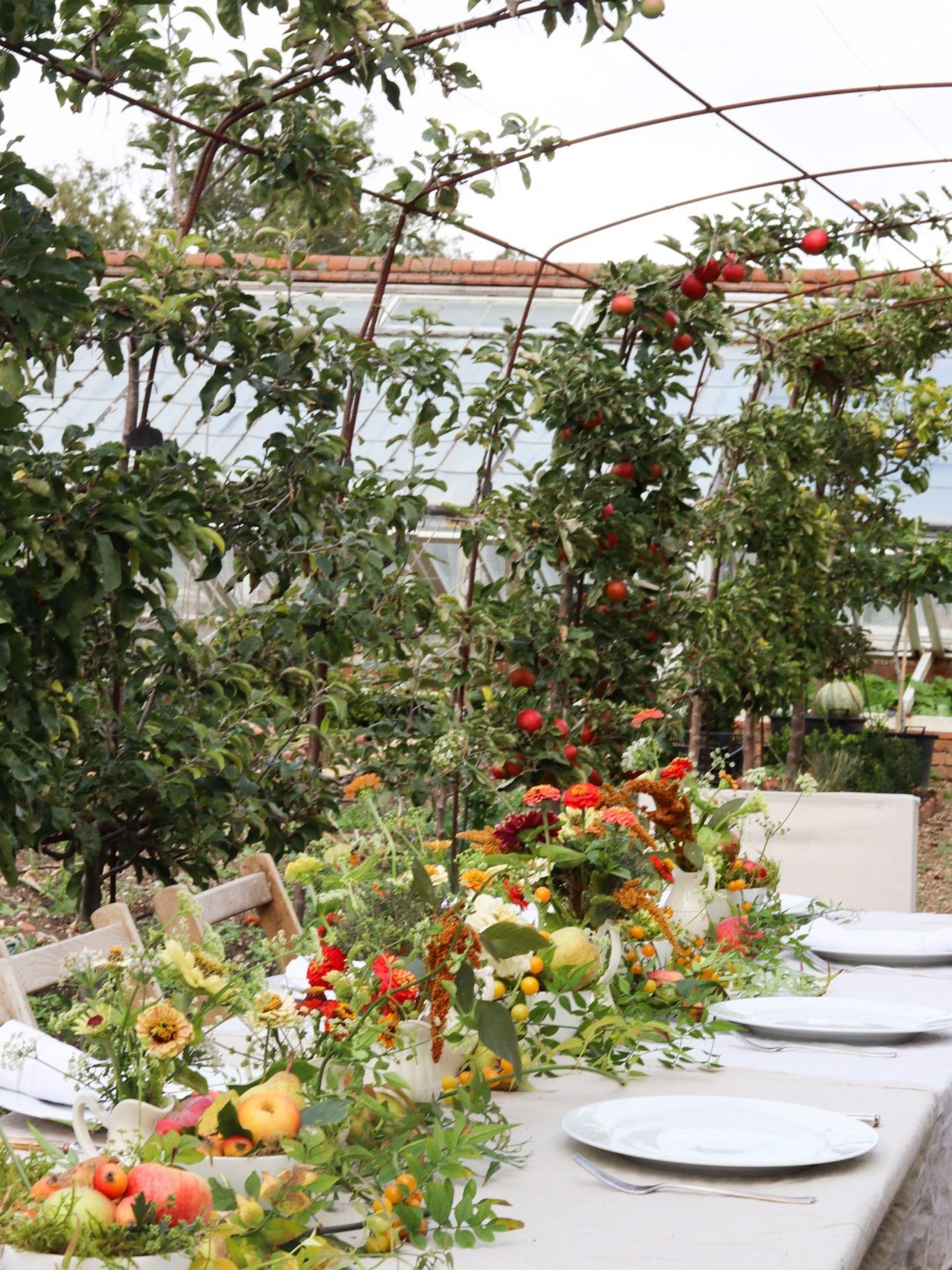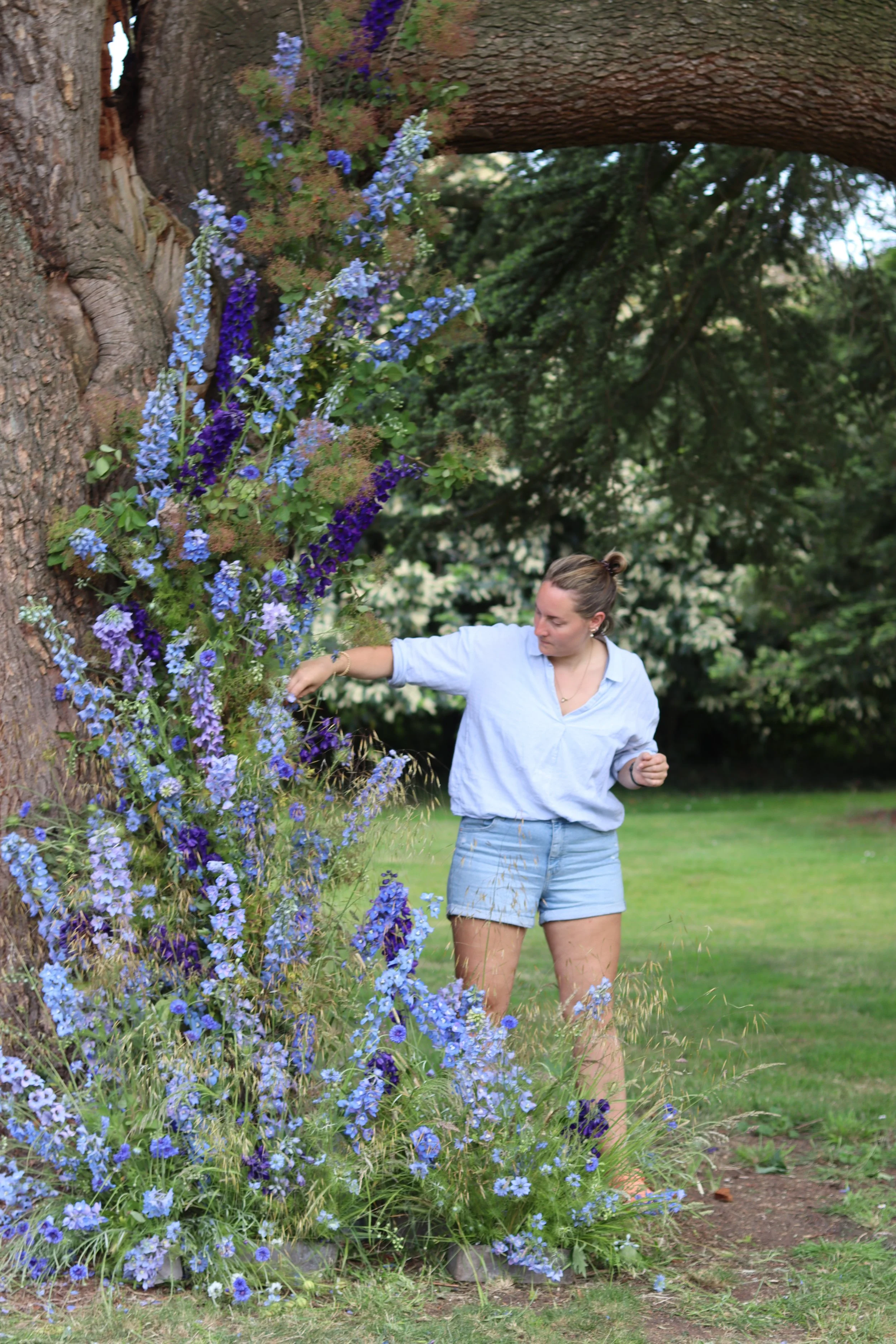SSAW Journal - The School of Sustainable Floristry
The late afternoon sun was slanting across the field, cutting across plots filled with late summer flowers, a pond and a few sheep meandering behind a polytunnel filled with roses. Paula handed me a bucket of freshly cut flowers in a muted burnt orange and burgundy palette filled with voluptuous dahlias and roses, delicate, dancing coreopsis and a mixture of seed heads and grasses full of texture. And I knew. This was what had been missing. The thing that I hadn’t been able to put my finger on when I was trying to create the kind of untamed floral designs that I was drawn to.
I had just finished a floristry career change, and with a beginner’s enthusiasm I was taking every spare moment to practice. Only everything I produced felt stiff, the colours were either too bright or too saccharine and the flowers I sourced from the wholesaler were nothing like the ones I could see other designers using on social media. It all just lacked an essence, but I couldn’t identify what. Until I found my way to Mill Pond Flower Farm in the Scottish Borders. And I have never looked back.
Over the years, traditional floristry has lost its connection to the rhythms of the seasons. It has depreciated the artistic skill required to work with nature’s palette and the flowers as they are presented to you. And it has moved away from its artisanal origins towards a standardised industry better suited to an economic model driven by scale, efficiency and globalisation.
With a growing reliance on international supply chains, over the last 50 years the industry evolved into what I call ‘standardised floristry’, dependent on large scale commercially grown flowers imported 12 months of the year. Standardised floristry is characterised by high street florists producing to standardised ‘recipes’, with ramrod straight flowers leading to stiff arrangements and a reliance on materials like floral foam to artificially engineer any sort of movement.
Only, standardised floristry no longer fits with the shape of the floristry industry, which has been significantly disrupted by the likes of Bloom & Wild and the supermarkets. These are not floristry businesses. They are giant digital fulfilment business, characterised by a small team of florists designing standardised recipes, centralised distribution centres and large-scale purchasing power. High street florists are not equipped to compete with their economies of scale and digital strategies. At the same time, the cost of imported flowers has risen due to a combination of Brexit legislation and fuel cost increases, making the current model even less viable. High street florists are among the top ten declining businesses in the UK.
Floristry training, however, continues to focus on this outdated model, teaching unsustainable practices with only imported flowers and a reliability on floral foam. Florists are graduating ill-equipped for the realities of working in this rapidly changing industry.
As we have seen in the food sector, there is a growing demographic of values-led customers who understand the relationship between seasonality, provenance and quality. They are increasingly drawn to a modern British floristry that feels more reflective of their own values. This, coupled with the rising costs of imports and sustainability concerns means that sustainability and locally grown flowers will inevitably become core to the mainstream floristry industry. And florists need to be taught the skills to work in this way.
That visit to Mill Pond Flower Farm changed my entire approach to floristry. Before that, I had been living and working in Asia for over 10 years. I returned to the UK physically craving the British seasons; the spring dew on the lawn, the long balmy evenings, the steam puff of breath on a crisp autumnal morning and the hoar frost of a bright winters day. The Chinese talk about di qi, the earth energy, and rooting myself to the earth and the seasons by working with locally grown flowers felt primal, essential.
Initially I used locally grown flowers in my burgeoning floristry business during the British flower season but felt scared to fully commit during the winter. What would I use? What would potential clients think? How would my business work financially? But after a while, I couldn’t reconcile this sustainable ‘where possible’ approach with my values. When I did import flowers, more as a comfort blanket than anything else, I felt tarnished, and they were left untouched in the studio. They lacked the vitality of the other flowers and held the arrangements back. So, I took the plunge and committed. 365 days a year, through the four seasons. And my business flourished. Clients ‘got it’ and came to me exactly because that was what they wanted for their weddings and events. Flowers that reflected their values and connected their event to a time and a place.
I see the future of floristry as a return to its local roots, deeply connected to sustainability and the seasons, underpinned by different business models. Floristry training needs to be reimagined to support this. Which is why I decided to set up The School of Sustainable Floristry. To teach the kind of floristry I wish I had been taught and to help others leapfrog the time I spent unlearning and relearning how to work - and flourish – as a florist in this modern age.
We are committed to teaching season-led, sustainable floristry, and demonstrating that this ‘radical’ approach to floristry is a viable business model. Where florists have been trained according to a recipe and using flowers they know they can get from the wholesaler all year round, we equip florists with the confidence and adaptability to design and work according to the different materials and conditions presented to them.
We also teach a more artistic, untamed approach to floral design. It’s about embracing the wilder, foraged elements of the natural landscape, the dead, the dried, the windfall and the emergent, as well as cultivated flowers from the plots and perennial borders. But more than just the materials, it’s about the negative space. The asymmetry. The depth. The line of beauty. The movement. About expressing the untamed beauty of the wild.
It was obvious that The School should be set on a flower farm, connecting our students to their medium (a direct opposite from the lengthy, anonymous supply chains of imported flowers). So, I approached Lucy Copeman who has run Howbury Farm Flowers from an 18th century walled garden in Bedfordshire for over 10 years. By teaching from the flower farm, students understand how and when the flowers grow, how to select, cut, condition and handle them for the best results. We cut from the plots, forage from around the estate, design and arrange in the flower barn and sit together to eat meals prepared using the seasonal ingredients from the kitchen garden.
And it is having results. Students are leaving with the confidence to work seasonally and sustainably, and a few have already made the change only ever to work with locally grown flowers in their businesses going forward.
Flowers are integral to our lives. They are a part of all of our most important life events, from celebrations and weddings, to funerals. They sit on our kitchen tables, mantlepieces and bedside tables. They are gifted with love, condolences and gratitude. They serve as an anchor for our brains, helping to connect us to a time and a place and serve as a reminder when they re-emerge a year or many years later. That connection with seasonality and a sense of place was lost for a while, but I see the future of floristry as reclaiming that. As reclaiming its soul. I hope The School can be a part of helping that process along.
Reproduced from the SSAW Journal, where it was originally published in January 2024







